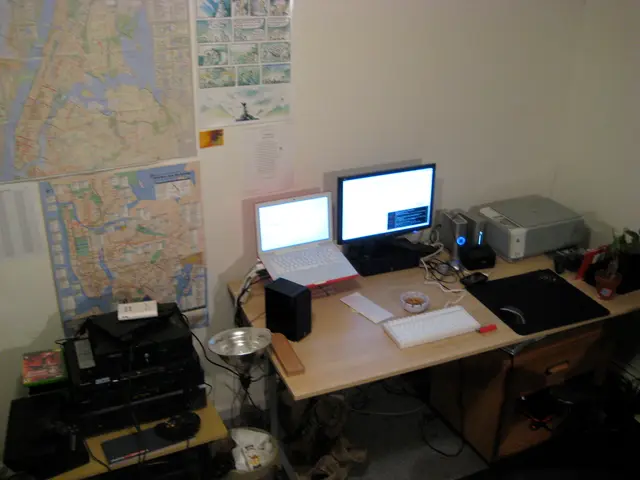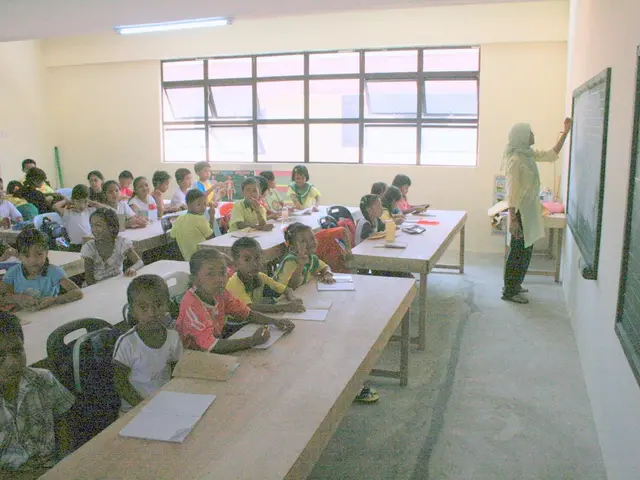Report suggests biomass co-firing as a deceptive tactic, potentially delaying Indonesia's transition away from coal usage.
Indonesia, a Southeast Asian country known for its rich biodiversity, has been introducing biomass into its power mix as part of its renewable energy push. However, the use of biomass co-firing, which involves blending biomass materials like sawdust with coal, has raised concerns about emissions standards and potential deforestation.
The majority of Indonesia's biomass co-firing plants are located in Java, where the boilers can only take smaller size inputs, such as sawdust and woodchips. This focus on biomass materials tailored for existing coal boilers is aimed at avoiding increasing electricity generation costs and ensuring effective combustion.
While biomass co-firing is generally promoted as a more environmentally friendly alternative to coal, the emissions standards for these plants are not explicitly detailed. The lack of specific numerical limits could potentially allow other health-harming pollutants to be released without monitoring.
In contrast, coal-fired power plants face evolving regulations, with newer plants built post-2019 required to meet stricter air quality standards. Older coal plants, however, are documented to emit pollutant levels at least twice as high. Indonesia has committed to a gradual coal phase-down and a partial moratorium on new coal-fired power plants development, driven by its Just Energy Transition Partnership (JETP), aiming to retire older coal assets and promote renewable and cleaner energy sources.
A key comparison shows that while biomass co-firing plants emit lower pollutants due to biomass blending, they have higher emission threshold limits for pollutants like PM, NOx, and SO2. The limit for mercury release in biomass power plants is also about 150 times higher than what is currently enforced for all coal power plants.
Civil society groups have expressed major concerns over the high reliance on bioenergy plans in decarbonising the power sector, highlighting deforestation risks and conflicts with Indonesia's target for the forestry and other land use (FOLU) sector to be a net carbon sink by 2030. The climate advocacy group Solutions for Our Future (SFOC) estimated that burning wood to reduce coal use by 10% in PLN's power plants could trigger the deforestation of an area roughly 35 times the size of Jakarta.
In an effort to address these concerns, organisations like CREA have called for PLN to require independent verification of emissions released throughout the value chain and to create a framework that enables proper plant-level assessment for all bioenergy use, including co-firing in coal plants.
As of 2024, PLN has implemented co-firing in 47 of its coal plants, with plans to expand it to all 52 units this year. However, there remains little clarity on how biomass will be sourced sustainably and be reliably scaled up. The growth in profitability of Indonesia's export-oriented biomass market has been driven by Japan and South Korea, the second and third largest global wood feedstock importers.
The debate over biomass co-firing in Indonesia is not unique. Scrutiny on biomass use is rising in many countries, especially if such risks are not managed. South Korea reportedly ending subsidies for biomass is a telling sign of waning support globally. Strict emissions standards, including the installation of air pollution control technologies in all power plants, are key to truly mitigating emissions in coal plants.
In conclusion, while biomass co-firing is seen as a transitional and cleaner approach compared to traditional coal plants, quantitative emissions limits specific to biomass co-firing in Indonesia require further official regulatory detail. The sustainability narrative attached to biomass co-firing is a subject of ongoing debate, with concerns about deforestation, emissions, and the long-term sustainability of this approach.
- Indonesia's push for renewable energy includes the use of biomass, but the practice of biomass co-firing has sparked concerns about deforestation and emissions.
- The majority of biomass co-firing plants in Indonesia are located in Java, using biomass materials like sawdust and woodchips, favoring existing coal boilers to avoid cost increases and ensure effective combustion.
- Emissions standards for biomass co-firing plants are not explicitly detailed, potentially allowing for the release of health-harming pollutants without monitoring.
- Unlike biomass co-firing plants, coal-fired power plants face stricter evolving regulations, and older plants emit pollutant levels at least twice as high.
- The limit for mercury release in biomass power plants is significantly higher than what is enforced for coal power plants, raising major concerns from civil society groups.
- Deforestation risks and conflicts with Indonesia's forestry and other land use sector targets stem from the high reliance on bioenergy plans in decarbonizing the power sector.
- Organisations like CREA are calling for PLN to implement independent verification of emissions and establish a framework for assessing bioenergy use, including co-firing in coal plants.
- As the debate over biomass co-firing unfolds, strict emissions standards and the installation of air pollution control technologies in all power plants are crucial to effectively mitigate emissions, striving for a sustainable energy transition.




